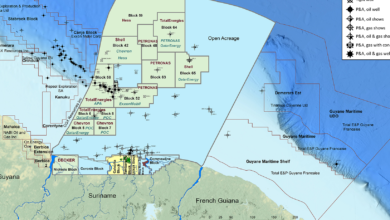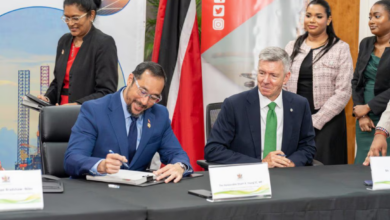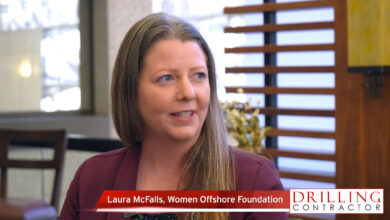Technology allows drilling contractors to bring added value beyond traditional work scope
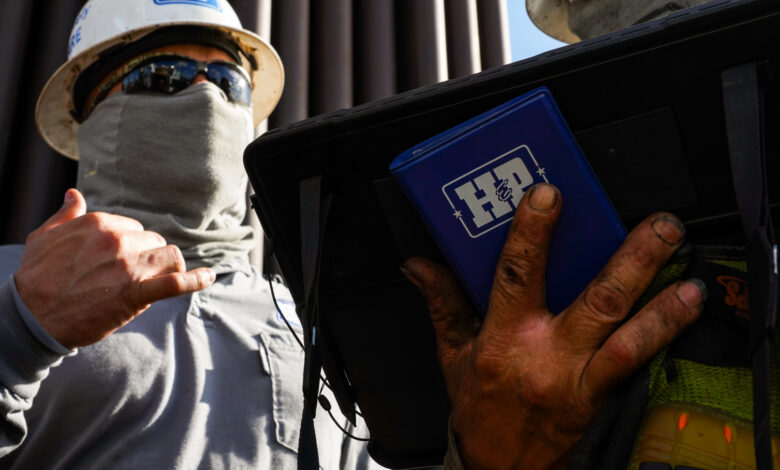
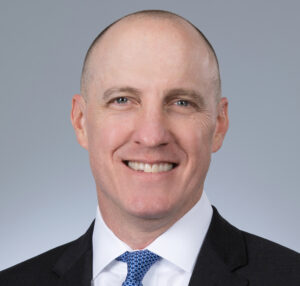
H&P’s John Bell: Rather than focusing on being the lowest-cost provider, H&P says it aims for consistent operations and precise wellbores, whether in US or international markets
By Stephen Whitfield, Associate Editor
John Bell is Senior VP, International and Offshore, at Helmerich & Payne (H&P).
H&P has been very active in markets like the Middle East and Latin America. What do you see as the biggest challenges in increasing activity in those areas?
H&P has operated in most countries in Latin America, and we’re in Colombia and Argentina right now. The region is challenging because of various economic and geopolitical issues, which have resulted in a lack of capital being deployed there. This means the level of activity can be inconsistent and leans toward short-term work.
In terms of the Middle East, certainly there’s a lot of capital being employed, but it is a very competitive market. There are also very high barriers to entry. The companies that we work with are primarily the national oil companies, and the process that they go through to acquire rigs and pick up providers is a longer process than in the US.
There’s also a huge focus on cost, but from our perspective, working with a customer is about more than just providing the lowest cost. It’s about how you can bring additional value beyond just what has traditionally been viewed as what a drilling provider can provide in these markets.
The other hurdle is that it takes significant capital to deploy assets overseas. You have to prepare the rig, put the rig on a boat and you often have to add additional equipment required by the customer. It just adds to the complexity of entering and competing in some of these markets.
Compared with North America, how are rig and drilling needs different in those non-US markets? On the flip side, where do you see similarities where H&P can apply its expertise gained in North America to improve operations in those other markets?
For us, it’s less about the rigs – because our rigs can perform the majority of the work that needs to be done in international markets – and more about the type of work that’s being done. In the US, it’s been almost exclusively unconventional drilling for the last 10 to 15 years, which requires a different mindset, different processes and different contractual incentives. Internationally, outside of the Vaca Muerta in Argentina, it’s still largely a conventional drilling market.
We believe we can have a huge impact on these markets as they begin developing their unconventional resources. However, we also believe that a lot of what we do from the standpoint of creating consistency, applying technology, having seamless safety and operational processes, can be very impactful in conventional markets.
What is H&P doing to ensure your rigs will remain competitive over the coming years, or are new rigs going to be needed?
It’s not about having a different type of rig or having more rigs; it’s about continuing to use more technology and drilling automation to differentiate. That has been our focus over the last handful of years, and it will continue to be our focus. We believe properly applying technology will be a significant differentiator.
So digital systems and software are going to play a bigger role than physical equipment upgrades?
That’s a fair assessment. The mechanization of various key components on the rig will be important, but we’re not looking at wholesale changes to the rigs themselves.
There are things we can do around automation that will make a difference, but it’s also just the digital systems we use from the standpoint of the operating system, from the support system perspective, whether that’s maintenance systems or asset management systems, and making sure we have the right people in the right place with the right skills.
It’s also about safety – there are so many things that technology can do to help us better operate the rig from a safety perspective.
Automation and digital systems have been a key area of focus within the industry. What do you see as the biggest gains that drilling contractors have made so far, and what do you see as the next frontier?
One thing that our customers want is consistency. It helps from a planning perspective, and it ultimately provides them with lower total well costs. If you drill one well way ahead of the curve but the next one is a mess, it is hard to plan and more than likely your overall costs will be higher in the long run.
Automation and technology also allows our customers to scale up and down as they need to. It allows them to combine our capabilities, our technologies, our remote operation centers, and so forth, with their capabilities and other third-party capabilities. They end up having smoother and the most precise wellbore, and they get fewer bit trips. You can’t do all these things in unison without technology.
Technology also plays a big role in safety, because it allows leaders on the rig to have more time to lead. In the old days when you had a driller on the brake handle, he had to just keep doing that. Nowadays, they’re in a driller’s cabin with joysticks, but how do we allow them to focus on the crews and have time to pre-job plan, stop and adapt when something doesn’t look right or the job changes?
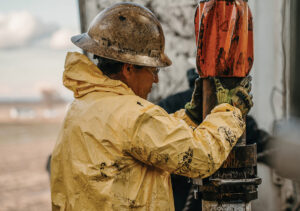
It sounds like the driller is still going to play a significant role even as you continue to adopt automated systems onto your rigs.
That’s exactly right. It’s about upskilling them and enhancing their impact. We want them to have the time to lead. We want them to develop personnel. The more we can help them spend less time on the detailed, repetitive work, the better.
How are personnel challenges different in your international markets versus in North America? What is H&P doing to ensure that its overseas rig crews are as competent and as a part of H&P’s culture as their counterparts in the US?
We pride ourselves on having a consistent culture and consistent processes around the globe, not just in the US. Whether you’re in Vaca Muerta, Bahrain, or in West Texas or North Dakota, it looks and feels the same and the people are using the same systems and same processes to the best of our abilities.
Obviously, there are some variations depending on certain countries and languages, but we want those tools to be applied across the fleet. We want to share learnings, and we work hard on that.
On your first question, the pandemic is an example of the personnel challenges we face in the international space. The personnel who rotated internationally on our rigs oftentimes came from different countries. They couldn’t just hop in their car and get to the rig from their home. That forced us to think about, one, how can we leverage technology and two, how do we manage our businesses differently when we have those logistical challenges.
The pandemic was a transformational event, and it really illustrated the challenges of operating internationally. We improved many of our processes.
Can you give some examples of things that you’re doing now that you hadn’t before?
I think one of the silver linings of the pandemic was that we were forced to collaborate in ways that we wouldn’t have seriously considered before. We used to fly people all around the world to attend a one-hour meeting. Now we have the ability to share information, solve problems and develop cross-functional teams better than ever before.
A lot of it just comes down to collaboration and remote communication. The pandemic meant that we needed to be more agile and create a platform that we could update remotely without having to send a technician on site to physically look at something. Also, we had to create ways to transfer knowledge when we couldn’t send somebody out to the rig.
What impacts have you seen from inflation and supply chain bottlenecks on your business? What do you think drilling contractors can do to minimize the impact of these issues?
We have a longer planning cycle internationally than in the US. We also have a robust planning cycle within H&P, so most of the time the assets we need come from our US operations, where we have a large volume of standardized components. Obviously, we’re not completely insulated from those supply chain issues, but we can plan for them.
The industry has seen a lot more focus on reducing the rig’s carbon emissions in recent years. What is your view on this, and has the energy transition had any impact on H&P’s business?
The desire to transition away from fossil fuels and the speed with which that takes place, from our view, has to be in proper balance with the need for energy security and the importance of energy affordability. We would love to see solutions grounded in collaboration and objectivity based on data.
Certainly, reducing emissions is important to H&P, and we will continue to look for ways to reduce emissions in the future. But we also, frankly, as an industry, need to emphasize what we’ve already accomplished in that regard. If you look at increased efficiencies in our fleet, and really across the US shale market, look at how much more footage is being drilled per day with how many fewer rigs. These significantly reduced well cycles mean less emissions across the board.
Decreased engine use is just one example. Our carbon footprint has decreased significantly while, at the same time, our footage and production have increased. I think that’s one of those things that people don’t fully appreciate and understand. We need to talk about that, as well as our plans for the future.
The younger generation of workers coming up have placed an increased value on sustainability. How do you reach out to them?
We have to have these stories in our playbook. We have to talk about the things we’ve done and get people excited. We have a lot of work to do, but we’re a part of the solution for the future, not part of the past. We need them to continue to come up with ideas of how to decrease emissions while we continue to provide all the benefits of hydrocarbons. It’s not about hydrocarbons and fossil fuels; it’s about the emissions.
We’ve been successful in attracting talent. Yes, it’s going to be harder in the future, but if you have the right story and you help people understand the role they can play in improving lives around the world, that can get people excited.
H&P has been a proponent of performance-based contracts, calling them the “next phase” in its evolution as a service provider. What are some of the hurdles to widespread adoption of performance-based contracts, and how might they be overcome?
One of the hurdles is that you have to have a foundation of trust with the customer because, in the end, the reason that performance-based contracts are so attractive to us and to our customers is that we’re focused on the same goals. We’re talking about shared successes, and we’re talking about outcomes that we both see as beneficial to us.
In order to do that, you have to do it based on a foundation of trust where we have clarity around how we can both win together. If you really don’t have clarity on how we’re going to work together, and you have different views on what success looks like, it won’t work. But we see customers like it because everybody is focused on the same outcomes. When you do that, we can all benefit from it.
The other hurdle is change management, and you have to have buy-in all the way from the rotary table to senior management, both with H&P and with the customer. If you don’t have that, you’re just going to stumble all the way. It’s a big change, but it can be hugely impactful when everybody is really clear about how we’re going to win together.
What are your main concerns around rig safety right now? What do you see as the next step-change in keeping personnel safe?
So, as I said earlier, the cycles that we’ve gone through in the past have made it difficult because you have people moving around between rigs, whether you’re going into a down-cycle or an up-cycle; it just changes the dynamics of the rigs and the crews. It changes what these crews know and how they access data, how they access information and how they interact.
Technology is key to creating a consistent set of processes and having up-to-date information for pre-job planning steps and so forth. We want these crews and these leaders to have the right tools and information at their fingertips. That, to me, is really the central aim.
The other part of this is, we should always ask what’s working and what’s not working. We have to be careful not to overcomplicate programs and lose sight of the core elements of what our safety program is all about.
Several years ago, we shifted away from a model of focusing on recordable incidents to focusing on serious injuries and fatalities. We overhauled our program and changed our mindset and entire approach to safety. We have to make sure our crews understand why we did that and what that means. We have to continually enhance our processes to make sure that we control and remove exposures that can cause serious injuries and fatalities. DC

